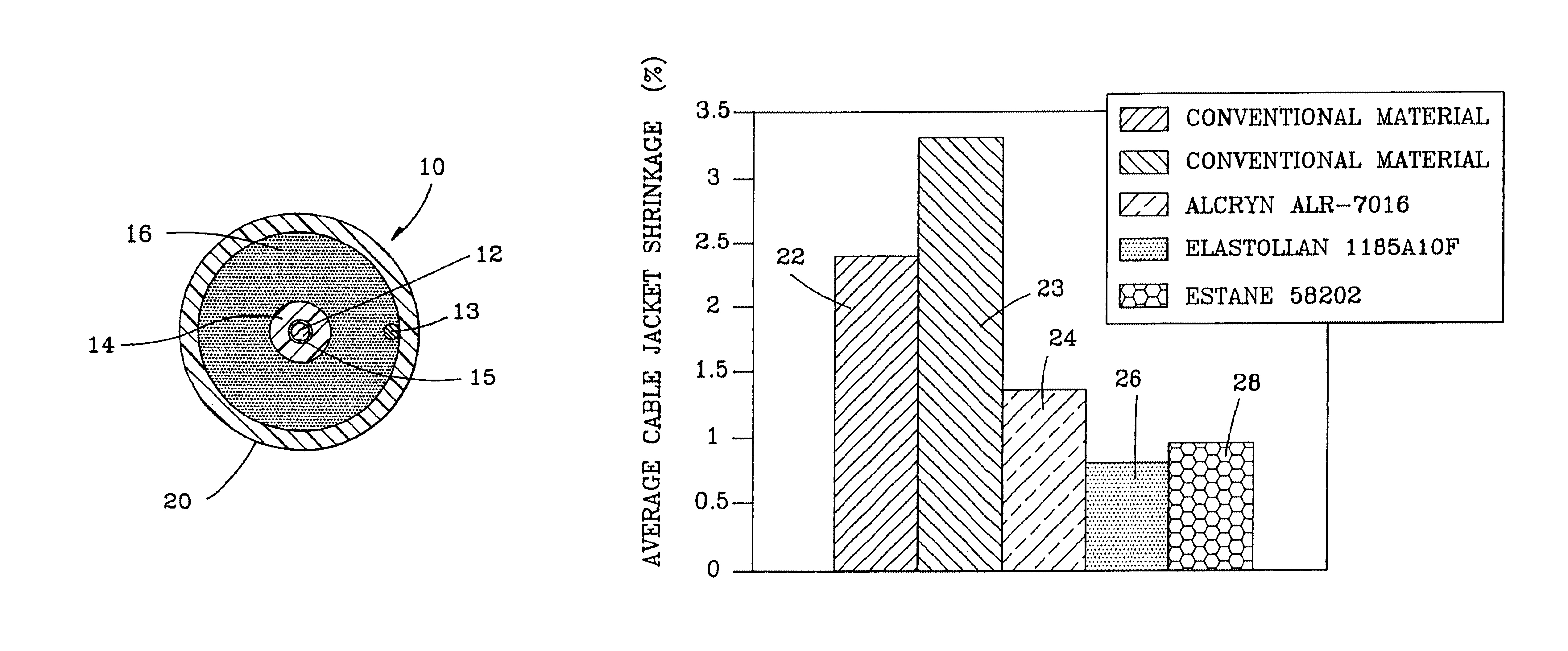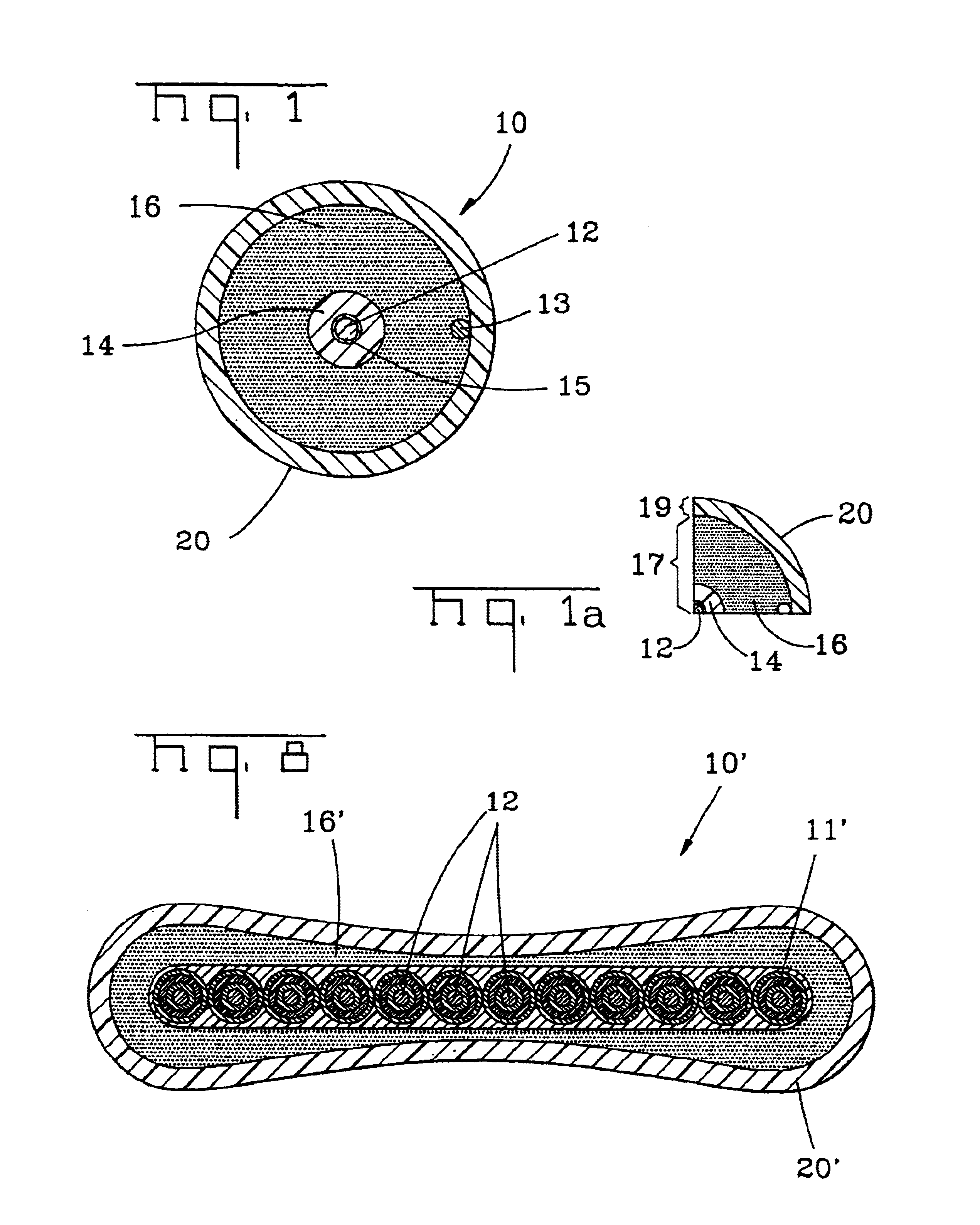Fiber optic cable having a low-shrink cable jacket and methods of manufacturing the same
a fiber optic cable and jacket technology, applied in the field of fiber optic cables, can solve the problems of increasing the bending radius of the fiber optic cable, the general unsuitability of small bending radius applications of fiber optic cables with anti-buckling characteristics, and the general inability of fiber optic cables without anti-bucking members to achieve optical performance degradation
- Summary
- Abstract
- Description
- Claims
- Application Information
AI Technical Summary
Benefits of technology
Problems solved by technology
Method used
Image
Examples
Embodiment Construction
[0031]Referring to FIG. 1, the present invention will be described with reference to an exemplary fiber optic cable 10. Fiber optic cable 10 generally includes a cable core 17 and a cable sheath 19 (FIG. 1a). Cable core 17 generally includes at least one optical fiber 12 having a tight buffer layer 14 therearound and an interfacial layer 15; however, cable core 17 may include other suitable cable components or fewer cable components. Sheath 19 generally includes a cable jacket 20; however, sheath 19 may include other suitable cable components. Interfacial layer 15 is generally disposed between optical fiber 12 and tight buffer layer 14 to promote stripability of tight buffer layer 14. A separation layer 16 generally surrounds tight buffer layer 14 and inhibits cable jacket 20 from adhering thereto, thereby preserving optical performance. Cable jacket 20 according to the present invention includes a low-shrink characteristic, thereby preserving optical performance, for example, in re...
PUM
 Login to View More
Login to View More Abstract
Description
Claims
Application Information
 Login to View More
Login to View More - R&D
- Intellectual Property
- Life Sciences
- Materials
- Tech Scout
- Unparalleled Data Quality
- Higher Quality Content
- 60% Fewer Hallucinations
Browse by: Latest US Patents, China's latest patents, Technical Efficacy Thesaurus, Application Domain, Technology Topic, Popular Technical Reports.
© 2025 PatSnap. All rights reserved.Legal|Privacy policy|Modern Slavery Act Transparency Statement|Sitemap|About US| Contact US: help@patsnap.com



